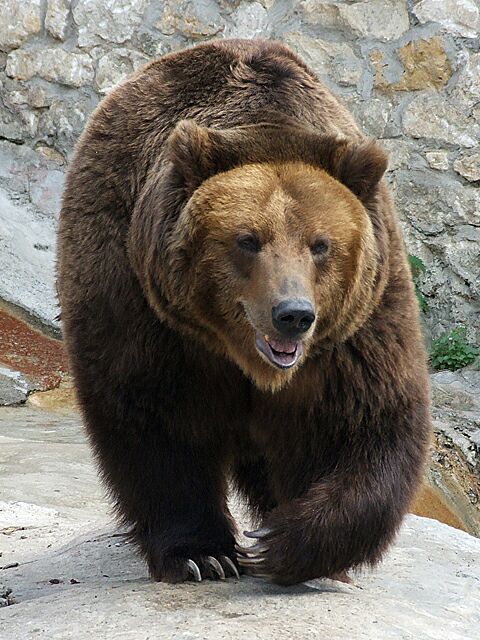|
Timmia Megapolitana
''Timmia megapolitana'', also known as Indian feather moss and warrior moss is a genus of moss in the family Timmiaceae and order Timmiales. Morphology ''Timmia megapolitana'' is a medium sized and deep green moss that has large leaves that are coarsely serrated in the free portion of the leaf and entirely in the sheathing part of the leaf. The leaves are on average 4–5 mm long with the adaxial leaf surface bulging mammilose while the abaxial surface is not. It can be found in loose aggregations or individual stems. The stems are on average 2–6 cm high following a simple or branched pattern. When the leaves become dry they curl up into a tubular shape but spread when moist. The spores are on average 10-14 μm in diameter with a yellow color and rough surface. The stems are on average 2–6 cm high following a simple or branched pattern. When the leaves become dry they curl up into a tubular shape but spread when moist. The spores are on average 10-14&nb ... [...More Info...] [...Related Items...] OR: [Wikipedia] [Google] [Baidu] |
Johann Hedwig
Johann Hedwig (8 December 1730 – 18 February 1799), also styled as Johannes Hedwig, was a German botanist notable for his studies of mosses. He is sometimes called the "father of bryology". He is known for his particular observations of sexual reproduction in the cryptogams. Many of his writings were in Latin, and his name is rendered in Latin as Ioannis Hedwig or Ioanne Hedwig. Early life Hedwig was born in Brașov, Transylvania, on 8 December 1730. As the son of a shoemaker, he grew up in poverty. It was in his childhood he became fascinated with mosses.Isely, Duane. One Hundred and One Botanists. Purdue University Press, 2002. He went on to study medicine at the University of Leipzig, and received his medical degree in 1759. Career After receiving his degree, Hedwig worked as a physician for the next twenty years. When he was not granted a license to practice in Transylvania with his Leipzig degree, he worked as a general practitioner in Chemnitz. It was during this tim ... [...More Info...] [...Related Items...] OR: [Wikipedia] [Google] [Baidu] |
Timmiaceae
''Timmia'' is a genus of moss. It is the only genus in the family Timmiaceae and order Timmiales.Buck, William R. & Bernard Goffinet. 2000. "Morphology and classification of mosses", pages 71-123 ''in'' A. Jonathan Shaw & Bernard Goffinet (Eds.), ''Bryophyte Biology''. (Cambridge: Cambridge University Press). . The genus is named in honor of the 18th-century German botanist Joachim Christian Timm Joachim Christian Timm (7 December 1734 – 3 February 1805) was a German apothecary, mayor of Malchin, and a botanist with a particular interest in cryptograms. This botanist is denoted by the List of botanists by author abbreviation, author abb .... The genus ''Timmia'' includes only four species: References External links * * Moss genera Timmiidae Taxa named by Johann Hedwig {{Bryopsida-stub ... [...More Info...] [...Related Items...] OR: [Wikipedia] [Google] [Baidu] |
Monoicy
Monoicy () is a sexual system in haploid plants (mainly bryophytes) where both sperm and eggs are produced on the same gametophyte, in contrast with dioicy, where each gametophyte produces only sperm or eggs but never both.Crandall-Stotler, B.J. & Bartholomew-Began, S.E. (2007). ''Morphology of Mosses (Phylum Bryophyta)''. In: Flora of North America Editorial Committee, eds. (1993+). ''Flora of North America North of Mexico''. 16+ vols. New York and Oxford. Volume 27, 2007.Bell, P.R. & Helmsley, A.R. (2000). ''Green plants, their origin and diversity'' (2nd ed.). Cambridge University Press. Both monoicous () and dioicous gametophytes produce gametes in gametangia by mitosis rather than meiosis, so that sperm and eggs are genetically identical with their parent gametophyte. It has been suggested that monoicy may have benefits in dry habitats where the ability to produce sporophytes is limited due to lack of water. Monoicy is similar to, and often conflated with, mono ... [...More Info...] [...Related Items...] OR: [Wikipedia] [Google] [Baidu] |
Alternation Of Generations
Alternation of generations (also known as metagenesis or heterogenesis) is the predominant type of life cycle in plants and algae. In plants both phases are multicellular: the haploid sexual phase – the gametophyte – alternates with a diploid asexual phase – the sporophyte. A mature sporophyte produces haploid spores by meiosis, a process which reduces the number of chromosomes to half, from two sets to one. The resulting haploid spores germinate and grow into multicellular haploid gametophytes. At maturity, a gametophyte produces gametes by mitosis, the normal process of cell division in eukaryotes, which maintains the original number of chromosomes. Two haploid gametes (originating from different organisms of the same species or from the same organism) fuse to produce a diploid zygote, which divides repeatedly by mitosis, developing into a multicellular diploid sporophyte. This cycle, from gametophyte to sporophyte (or equally from sporophyte to gametophyte), is the way ... [...More Info...] [...Related Items...] OR: [Wikipedia] [Google] [Baidu] |
Timmiidae
''Timmia'' is a genus of moss. It is the only genus in the family Timmiaceae and order Timmiales.Buck, William R. & Bernard Goffinet. 2000. "Morphology and classification of mosses", pages 71-123 ''in'' A. Jonathan Shaw & Bernard Goffinet (Eds.), ''Bryophyte Biology''. (Cambridge: Cambridge University Press). . The genus is named in honor of the 18th-century German botanist Botany, also called plant science, is the branch of natural science and biology studying plants, especially Plant anatomy, their anatomy, Plant taxonomy, taxonomy, and Plant ecology, ecology. A botanist or plant scientist is a scientist who s ... Joachim Christian Timm. The genus ''Timmia'' includes only four species: References External links * * Moss genera Timmiidae Taxa named by Johann Hedwig {{Bryopsida-stub ... [...More Info...] [...Related Items...] OR: [Wikipedia] [Google] [Baidu] |
Flora Of Japan
The flora of Japan comprises a large assemblage of plant species which can be found in Japan, such as sakura, katsura (tree), katsura, momiji and azalea. There are many species which are endemic to Japan. Diversity Japan has significant diversity in flora. Of approximately 5,600 total vascular plant species, almost 40% are endemic. This richness is due to the significant variation in latitude and altitude across the country, a diversity of climatic conditions due to monsoons, and multiple geohistorical incidences of connections with the mainland. Vegetation types Japan consists of roughly 4 vegetation classification, vegetation zones that are delineated by temperature and precipitation: the alpine region, subalpine region, summer-green broad-leaved forest region and Taiheiyo evergreen forests, evergreen broad-leaved forest region. Due to its substantial length of over 3,000 km from north to south and its mountain ranges that can exceed 3,000 meters, Japan's vegetation v ... [...More Info...] [...Related Items...] OR: [Wikipedia] [Google] [Baidu] |
Flora Of Russia
The wildlife of Russia inhabits terrain that extends across 12 time zones and from the tundra region in the far north to the Caucasus Mountains and prairies in the south, including temperate forests which cover 70% of the country. Russia's forests comprise 22% of the forest in the world as well as 33% of all temperate forest. According to the data furnished in the '' Red Data Book of the Russian Federation'', as of 1996, there were 266 mammal species and 780 bird species under protection. Some of the threatened plant species are the Siberian cedar pine, Korean cedar pine in the far eastern part of the country, wild chestnut in the Caucasus. In the Russian Far East, brown bears, Eurasian lynx, and red deer, Amur tigers, Amur leopards, and Asiatic black bears are reported. There are also about 350 bird species and 30 percent of Russia's endangered species are found. Carnivores under threat include the Siberian tiger, numbered at 400, and the Amur leopard of which only 30 remained ... [...More Info...] [...Related Items...] OR: [Wikipedia] [Google] [Baidu] |
Flora Of Mongolia
The wildlife of Mongolia consists of flora, fauna and funga found in the harsh habitats dictated by the diverse climatic conditions found throughout the country. In the north, there are salty marshes and fresh-water sources. The centre has desert steppes. In the south, there are semi deserts as well as the hot Gobi Desert in the south, the fifth-largest desert in the world. About 90% of the landlocked country is covered by deserts or pastures with extreme climatic conditions. Fauna in the wild includes 139 mammal species, 448 bird species (331 of which are migratory and 119 are resident), 76 fish species, 22 reptile species and 6 amphibian species. Grassland and shrubland covers 55 percent of the country. In the steppe zone, forest covers only 6 percent while 36 percent is covered by desert vegetation, and only 1 percent is used for human habitation and agriculture. The vegetation in the eastern steppe region is grassland (the largest of its type in the world). Geography Topogr ... [...More Info...] [...Related Items...] OR: [Wikipedia] [Google] [Baidu] |
Flora Of China
The flora of China consists of a diverse range of plant species including over 39,000 vascular plants, 27,000 species of fungi and 3000 species of bryophytes.Wu, Z. Y., P. H. Raven & D. Y. Hong, eds. 2006. Flora of China. Vol. 22 (Poaceae). Science Press, Beijing, and Missouri Botanical Garden Press, St. Louis - http://www.efloras.org/volume_page.aspx?volume_id=2022&flora_id=2 More than 30,000 plant species are native to China, representing nearly one-eighth of the world's total plant species, including thousands found nowhere else on Earth. China's land, extending over 9.6 million km, contains a variety of ecosystems and climates for plants to grow in. Some of the main climates include shores, tropical and subtropical forests, deserts, elevated plateaus and mountains. The events of the continental drift and early Paleozoic Caledonian movement also play a part in creating climatic and geographical diversity resulting in high levels of endemic vascular flora. These landscapes prov ... [...More Info...] [...Related Items...] OR: [Wikipedia] [Google] [Baidu] |
Plants Described In 1801
Plants are the eukaryotes that form the kingdom Plantae; they are predominantly photosynthetic. This means that they obtain their energy from sunlight, using chloroplasts derived from endosymbiosis with cyanobacteria to produce sugars from carbon dioxide and water, using the green pigment chlorophyll. Exceptions are parasitic plants that have lost the genes for chlorophyll and photosynthesis, and obtain their energy from other plants or fungi. Most plants are multicellular, except for some green algae. Historically, as in Aristotle's biology, the plant kingdom encompassed all living things that were not animals, and included algae and fungi. Definitions have narrowed since then; current definitions exclude fungi and some of the algae. By the definition used in this article, plants form the clade Viridiplantae (green plants), which consists of the green algae and the embryophytes or land plants (hornworts, liverworts, mosses, lycophytes, ferns, conifers and other gymnosperm ... [...More Info...] [...Related Items...] OR: [Wikipedia] [Google] [Baidu] |






